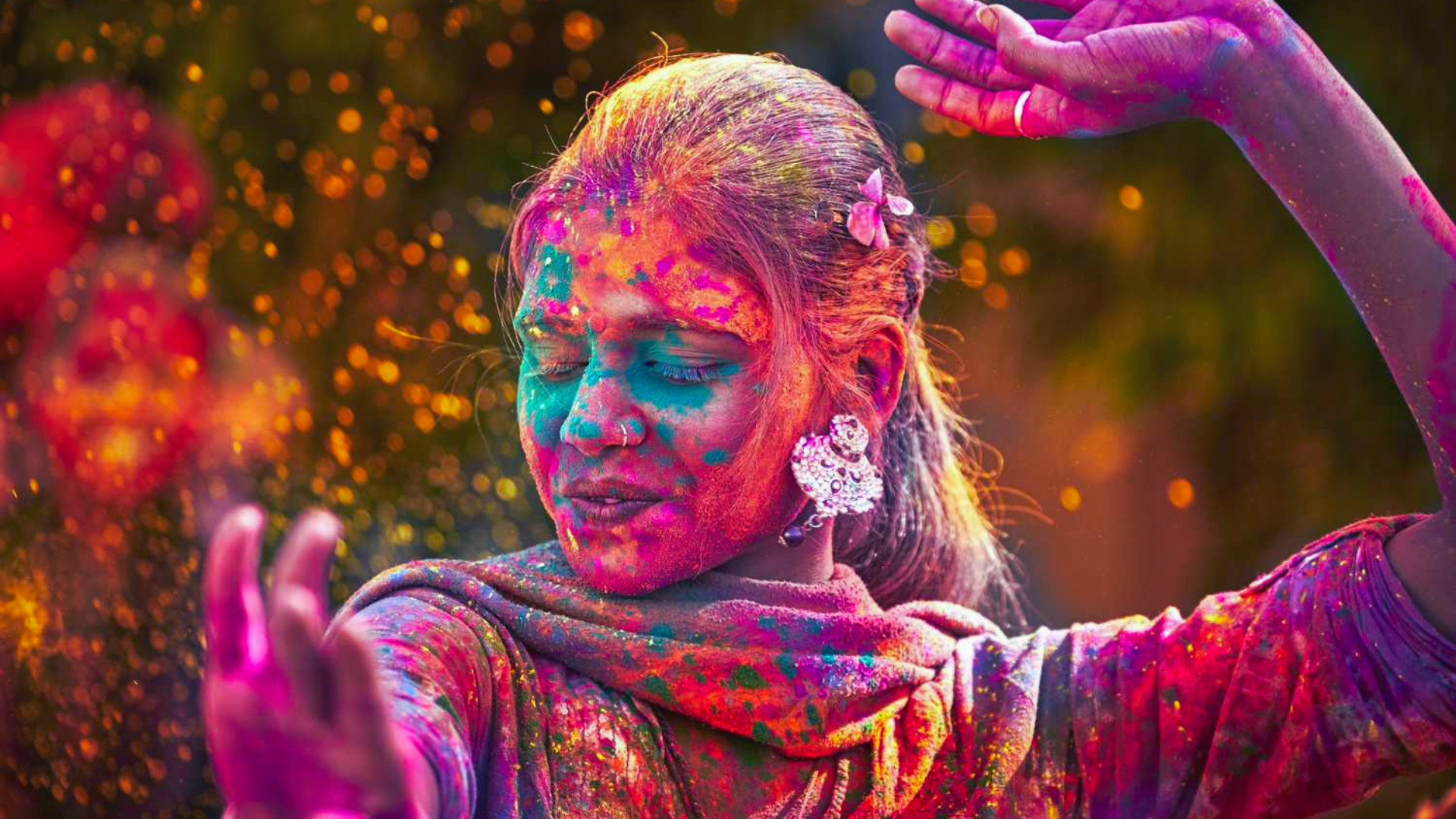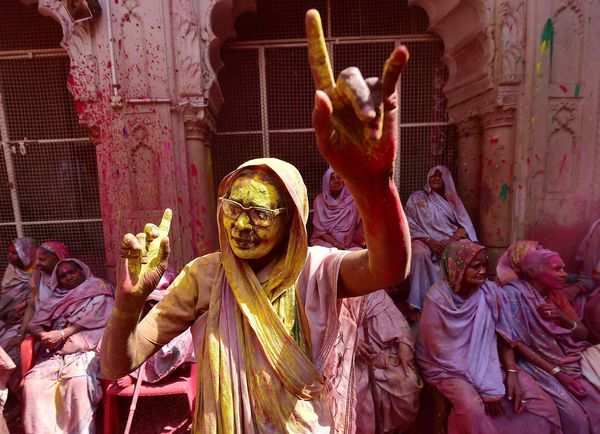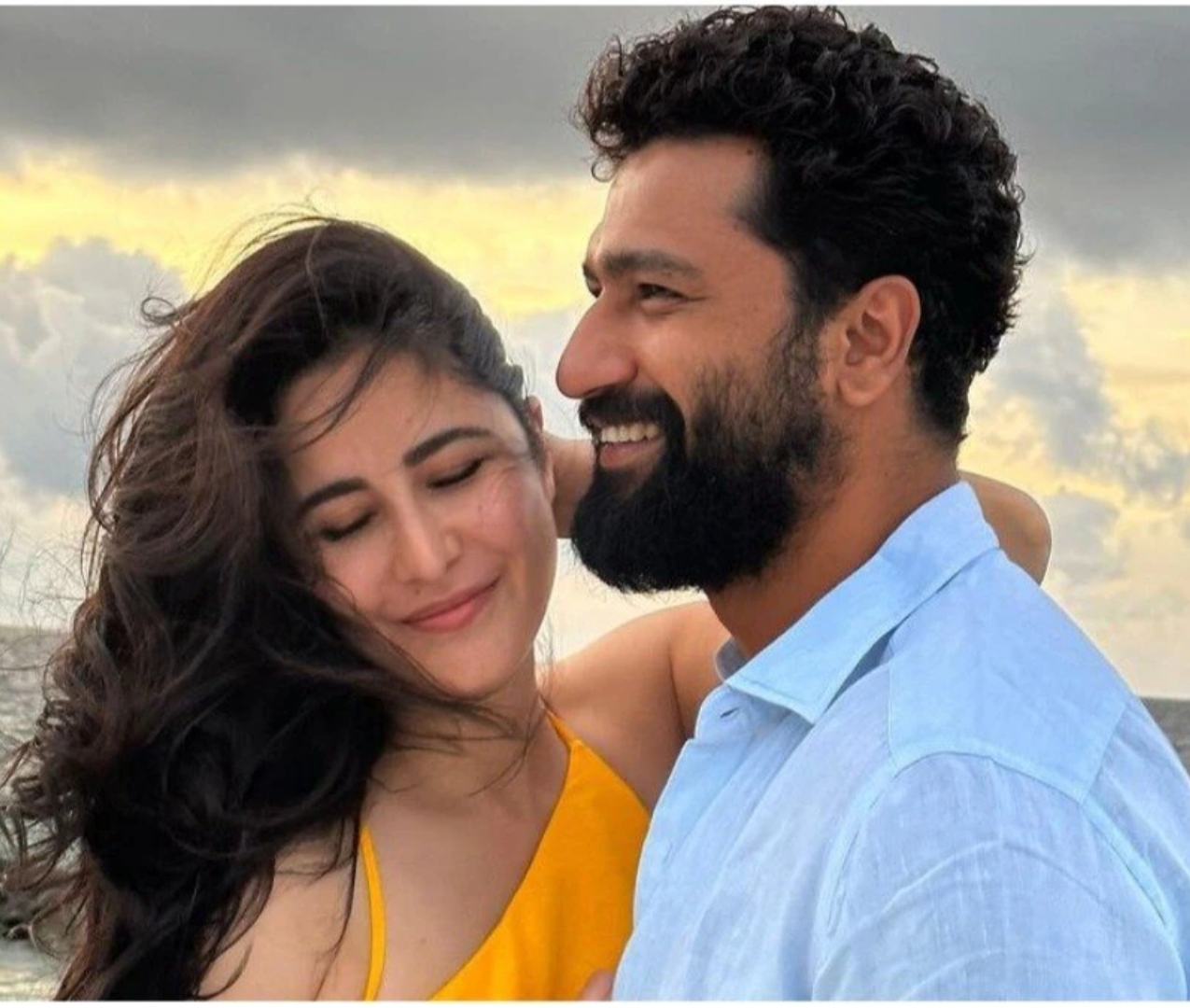In the tapestry of Indian traditions, there exists a belief that a widow’s life should be cloaked in seclusion, marked by mourning for her husband and a deliberate avoidance of public gatherings. Attending weddings is deemed ominous, as she is believed to bring ill fortune to the family, while her presence at a birth ceremony is thought to cast a shadow of misfortune upon the newborn.
Amidst these societal norms, Holi, the vibrant festival of spring and India’s exuberant celebration of colors, presents a paradox. It’s a time when friends and strangers alike engage in a playful exchange of colored water and vibrant powders, creating a kaleidoscope of hues. Yet, for widows, there’s an unspoken expectation to fade into the background, to remain unseen and untouched by the colorful revelry that engulfs the streets.
However, amidst these age-old customs, winds of change are blowing. Organizations and initiatives are emerging to empower widows, encouraging them to break free from the shackles of societal norms and embrace life’s colorful moments with zest and enthusiasm. These movements are challenging stereotypes and fostering inclusivity, reminding us that every individual, regardless of their circumstances, deserves to revel in the joy of festivals like Holi.
As the colors of Holi paint the streets in hues of joy and camaraderie, may it also paint a path towards greater acceptance, understanding, and celebration of diversity in all its forms.
BREAKING BARRIERS & STEPPING FOR JOY:
The narrative to break stereotype began in 2012. All thanks to the intervention of the Supreme Court and the dedicated efforts of Sulabh International (NGO).
Sulabh International, known for its advocacy of empowerment and social inclusion, initiated a transformative journey to uplift the lives of widows in Vrindavan. A significant step in this endeavor was the introduction of a unique Holi celebration dedicated to them at the Gopinath Temple. Beyond the vibrant colors, this initiative aimed at restoring joy, promoting social acceptance, and intricately weaving these women back into the lively fabric of Vrindavan’s cultural landscape.
In recent times, there has been a push to empower and uplift these women, leading to initiatives like the Holi celebrations tailored for widows in Vrindavan. What sets this event apart is its departure from traditional norms that had previously confined widows to a solitary and sorrowful existence.
On the day of Holi, the streets of Vrindavan come alive with a riot of colors and laughter. Widows, adorned in bright hues, join in the revelry, smearing each other with gulal (colored powders) and exchanging warm embraces. The air is filled with the sound of laughter and music, a stark contrast to the silence and somberness that often surrounded these women in the past.
For many widows, this celebration is more than just a festival; it is a symbol of hope, resilience, and newfound freedom. It provides them with a sense of belonging and community, erasing the boundaries of age and social status. In this colorful carnival, they find acceptance and support, forging bonds of friendship that transcend their past sorrows.
Organizations and volunteers play a crucial role in organizing and funding these Holi events for widows. They ensure that every woman has access to the festivities, regardless of their background or financial means. These efforts not only bring joy to the widows but also raise awareness about their rights and dignity within society.
Moreover, the Holi celebrations for widows in Vrindavan serve as a powerful message of inclusivity and compassion. They remind us that festivals, beyond their religious and cultural significance, are opportunities to spread love and happiness to those who need it most.
As the colors of Holi paint the streets of Vrindavan in vibrant hues, they also paint a picture of hope and solidarity for widows, transforming a once-muted existence into a canvas of joy and togetherness.



























